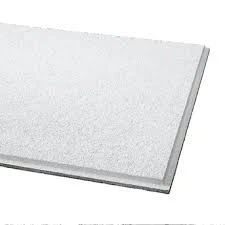Nov . 23, 2024 00:46 Back to list
ceiling metal grid
Understanding Ceiling Metal Grids A Comprehensive Overview
Ceiling metal grids are an essential component of modern architectural design, offering both functional and aesthetic benefits. These grids are primarily used to support ceiling tiles and other materials in suspended ceiling systems. As construction techniques have evolved, the use of metal grids has become increasingly popular due to their versatility and durability.
What Are Ceiling Metal Grids?
Ceiling metal grids, often made from materials such as steel or aluminum, provide a structural framework that holds ceiling panels in place. These grids are designed to be suspended from the overhead structural elements of a building, creating a space between the actual ceiling and the panels. This cavity serves multiple purposes, including accommodating plumbing, electrical wiring, and HVAC systems.
One significant advantage of metal grid ceilings is their lightweight nature combined with high strength. They can support various types of ceiling tiles and panels, which can be easily replaced or upgraded. Additionally, metal grids are resistant to warping and sagging, making them an ideal choice for commercial and industrial applications where longevity is crucial.
Types of Ceiling Metal Grids
Ceiling metal grids come in several types, each serving different aesthetic and functional purposes. The most common types include
1. T-Bar Systems The most widely used metal grid system, consisting of T-shaped runners that intersect to create a framework for ceiling tiles. T-Bar systems are easy to install and can accommodate various tile sizes.
2. Z-Clip Systems This type features Z-shaped clips that secure the panels snugly against the structure. Z-clip systems offer a sleek and minimal appearance, often preferred in modern design.
3. Lay-in Grids These grids are designed for easy tile replacement. Panels can be lifted out and replaced without disturbing the grid, making maintenance straightforward.
ceiling metal grid

Benefits of Using Ceiling Metal Grids
The popularity of ceiling metal grids in commercial and residential buildings can be attributed to their numerous advantages
- Aesthetic Flexibility Metal grids can support various ceiling finishes, including acoustical tiles, wood panels, or decorative materials, providing designers with a flexible canvas.
- Acoustic Performance Many ceiling tiles used with metal grids are designed to reduce noise levels in large spaces, enhancing the acoustic comfort of offices, schools, and other public buildings.
- Energy Efficiency The air gap created by suspended ceilings can improve a building's energy efficiency by helping regulate temperature, allowing for better airflow and reducing heating and cooling costs.
- Accessibility The space between the ceiling and the metal grid allows easy access to plumbing, electrical, and mechanical systems, facilitating maintenance without extensive disruption.
- Cost-effectiveness Metal grid ceilings can be more economical in the long run, as their durability results in fewer replacements and repairs compared to traditional ceilings.
Conclusion
Ceiling metal grids play a crucial role in contemporary architecture, blending functionality with aesthetic appeal. They offer a versatile solution for various building requirements while enhancing the overall design. As building technologies continue to advance, the role of ceiling metal grids will likely evolve, paving the way for even more innovative applications in the built environment. Whether for commercial, educational, or residential spaces, understanding the benefits and types of ceiling metal grids is essential for making informed architectural choices.
-
Durable Ceiling T Grid Systems | Easy InstallationNewsAug.29,2025
-
PVC Gypsum Ceiling: Durable, Laminated Tiles for Modern SpacesNewsAug.28,2025
-
Pvc Gypsum Ceiling Is DurableNewsAug.21,2025
-
Mineral Fiber Board Is DurableNewsAug.21,2025
-
Ceiling Tile Clip Reusable DesignNewsAug.21,2025
-
Ceiling T Grid Modular DesignNewsAug.21,2025







